82 Captivating Echinopsis Cacti: A Visual Encyclopedia
Echinopsis is a special kind of cactus with more than 100 different types. It got its nickname, the hedgehog cactus, because, just like a hedgehog, it has pointy spines all over its body. But that’s not all! What makes Echinopsis truly unique is the stunning flowers that bloom on these plants. Get ready to dive into the secrets of taking care of and growing these fascinating Echinopsis plants.
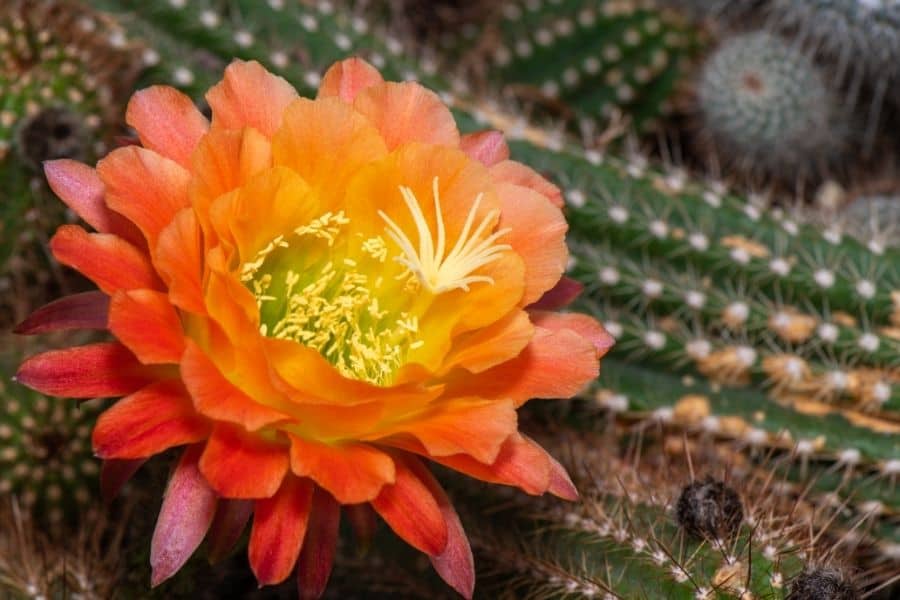
Contents
- 1 About the Echinopsis Cactus
- 2 Types of Echinopsis
- 3 Echinopsis Species and Varieties
- 3.1 Echinopsis amblayensis
- 3.2 Echinopsis ancistrophora
- 3.3 Echinopsis arachnacantha
- 3.4 Echinopsis atacamensis
- 3.5 Echinopsis aurea
- 3.6 Echinopsis backebergii
- 3.7 Echinopsis bruchii
- 3.8 Echinopsis caineana
- 3.9 Echinopsis calorubra
- 3.10 Echinopsis candicans
- 3.11 Echinopsis chamaecereus
- 3.12 Echinopsis chiloensis
- 3.13 Echinopsis chrysochete
- 3.14 Echinopsis cinnabarina
- 3.15 Echinopsis densispina
- 3.16 Echinopsis eyriesii
- 3.17 Echinopsis ferox
- 3.18 Echinopsis Flying Saucer
- 3.19 Echinopsis haematantha
- 3.20 Echinopsis hertrichiana
- 3.21 Echinopsis huascha
- 3.22 Echinopsis lageniformis
- 3.23 Echinopsis lateritia
- 3.24 Echinopsis leucantha
- 3.25 Echinopsis macrogona
- 3.26 Echinopsis mamillosa
- 3.27 Echinopsis marsoneri
- 3.28 Echinopsis maximiliana
- 3.29 Echinopsis mirabilis
- 3.30 Echinopsis oligotricha
- 3.31 Echinopsis oxygona
- 3.32 Echinopsis pachanoi
- 3.33 Echinopsis pentlandii
- 3.34 Echinopsis pugionacantha
- 3.35 Echinopsis rhodotricha
- 3.36 Echinopsis Rose Quartz
- 3.37 Echinopsis saltensis
- 3.38 Echinopsis schickendantzii
- 3.39 Echinopsis schieliana
- 3.40 Echinopsis scopulicola
- 3.41 Echinopsis spachiana
- 3.42 Echinopsis spiniflora
- 3.43 Echinopsis strigosa
- 3.44 Echinopsis subdenudata
- 3.45 Echinopsis tacaquirensis
- 3.46 Echinopsis tarijensis
- 3.47 Echinopsis tegeleriana
- 3.48 Echinopsis terscheckii
- 3.49 Echinopsis thionantha
- 3.50 Echinopsis tiegeliana
- 3.51 Echinopsis volliana
- 3.52 Echinopsis werdermanniana
- 3.53 Echinopsis werdermannii
- 3.54 Echinopsis yuquina
- 4 How Do You Care for Echinopsis?
- 5 How to Propagate Echinopsis
- 6 FAQs
About the Echinopsis Cactus
These cacti are native to South America, particularly Argentina, Bolivia, Peru, and Brazil, where they thrive in arid and semi-arid regions. All types of Echinopsis have succulent stems that allow them to store water, enabling them to survive in dry climates with minimal rainfall.
One of the most enchanting aspects of the Echinopsis cactus is its stunning flowers. These blossoms emerge in a wide range of colors, including vibrant oranges, pinks, reds, yellows, and whites. The flowers are usually trumpet-shaped and display intricate patterns, attracting pollinators such as bees, moths, and birds.
The spines of Echinopsis cacti vary greatly across species. Some have short and stubby spines, while others showcase long and slender needles. The spines not only act as a deterrent to protect the plant from predators but also provide shade, reducing water loss through evaporation.
The shapes and sizes of Echinopsis species are equally marvelous. Some Echinopsis cacti form low-growing clumps with numerous offsets, creating beautiful clusters of succulent spheres. Others grow tall and erect, forming majestic columns that can reach several meters in height.
Now that you’ve familiarized yourself with the Echinopsis cacti, get ready to feast your eyes on an extraordinary visual gallery of 82 unique varieties.
Types of Echinopsis
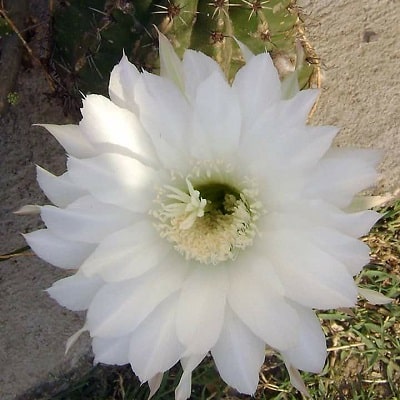
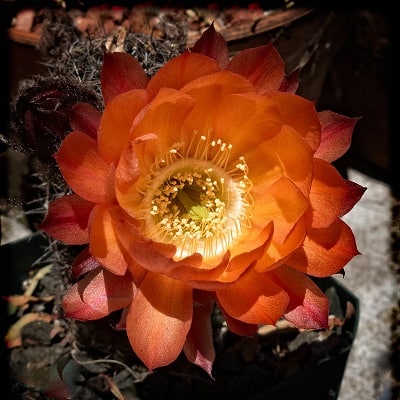
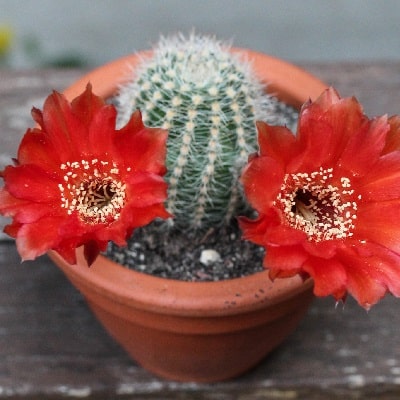
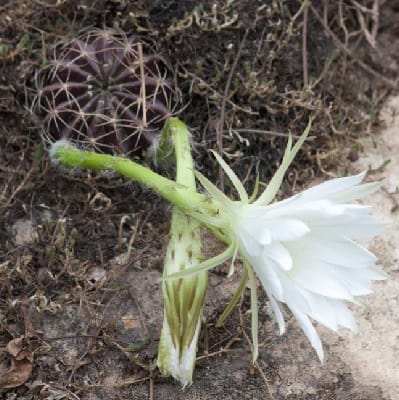
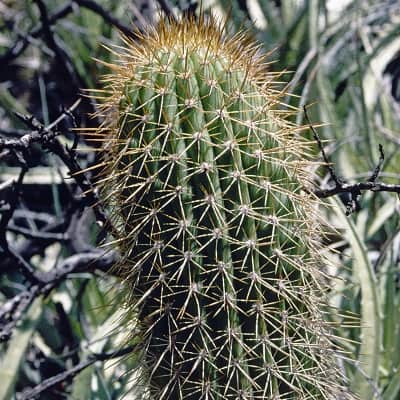
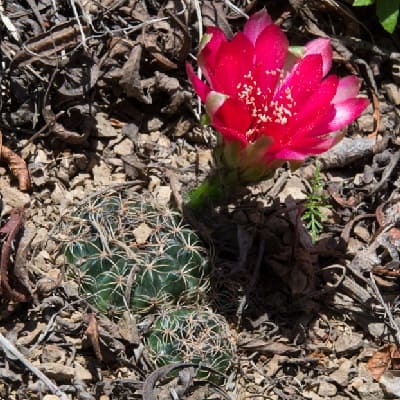
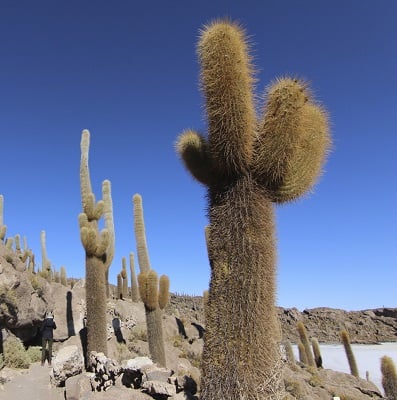
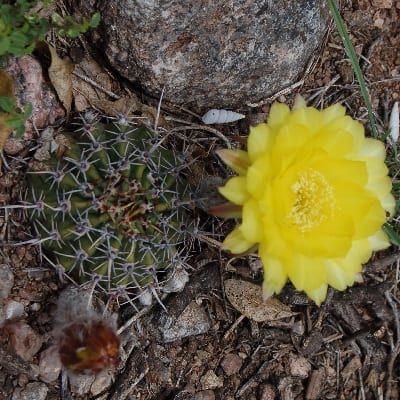
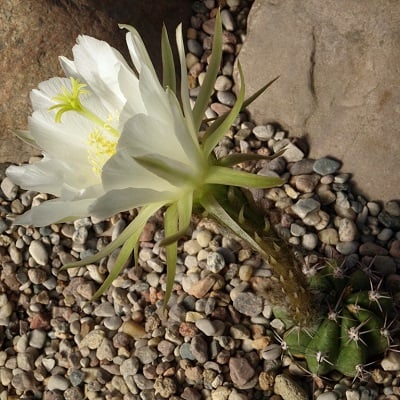
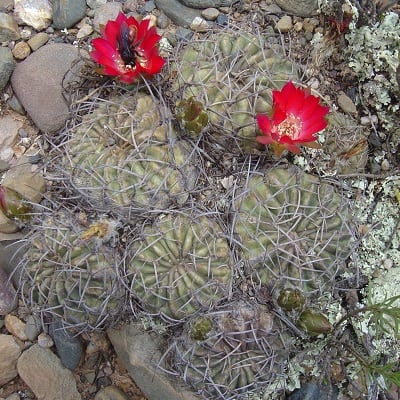

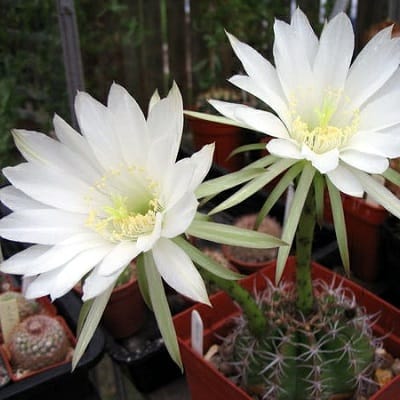
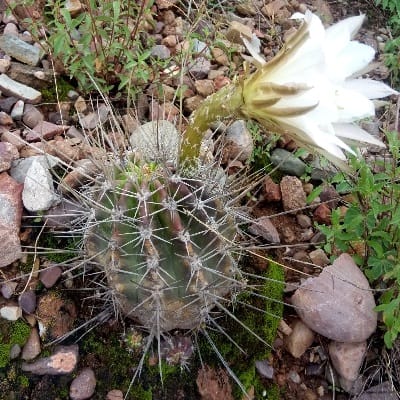
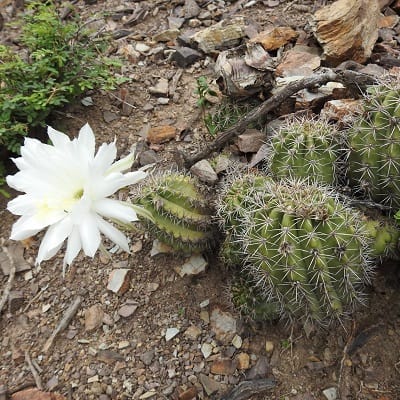
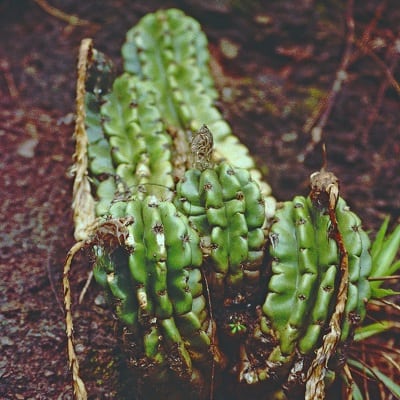
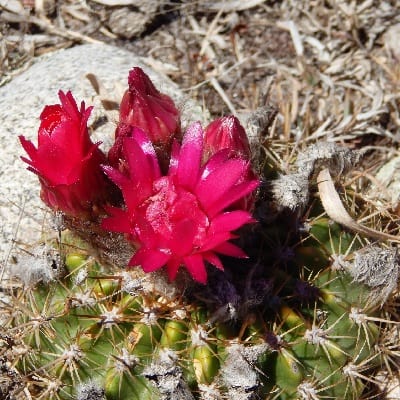
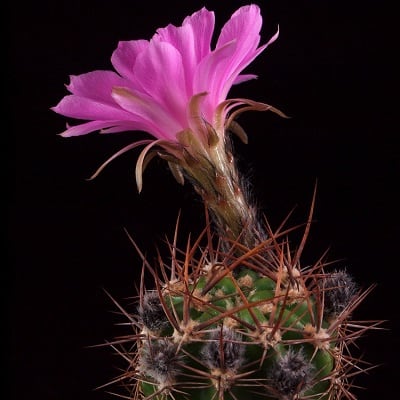
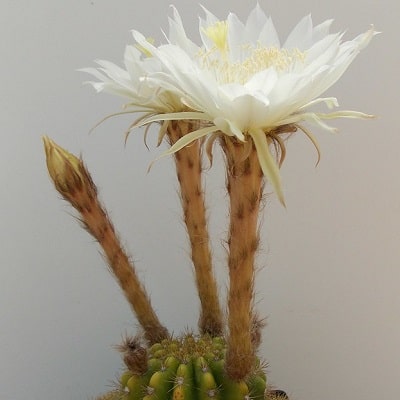
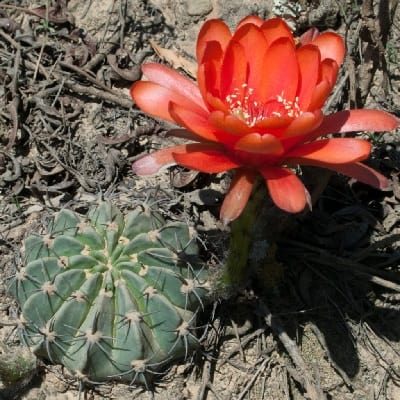
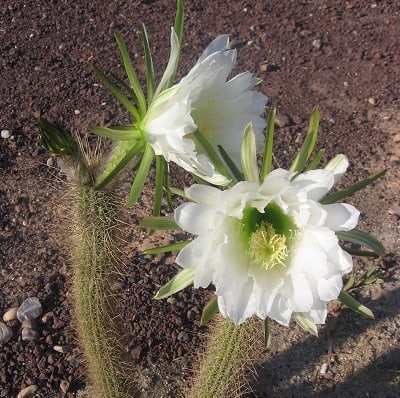
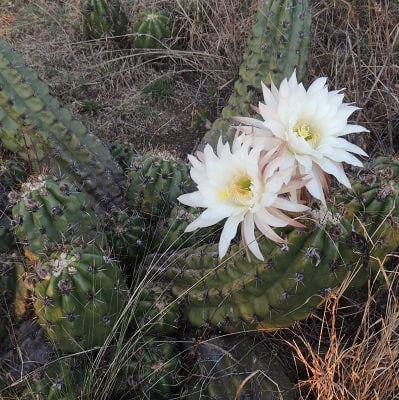

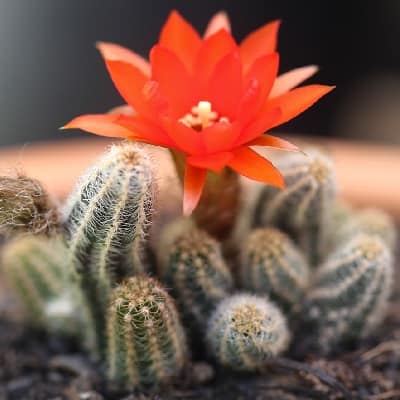
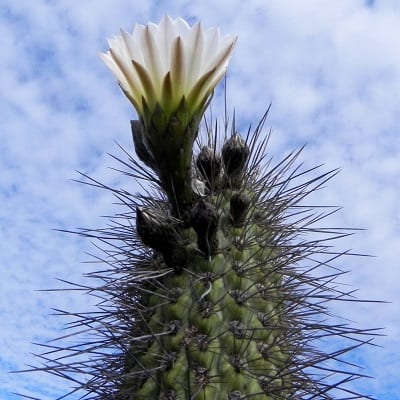
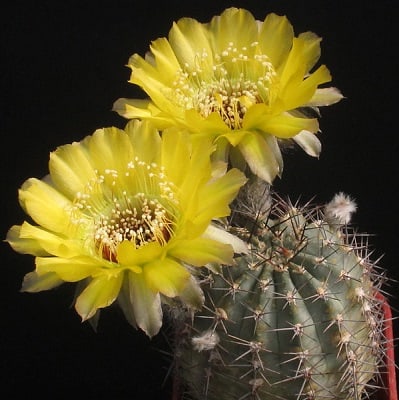
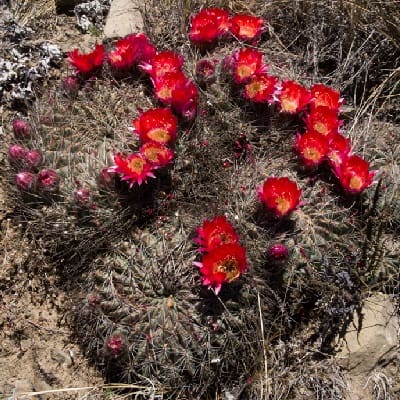
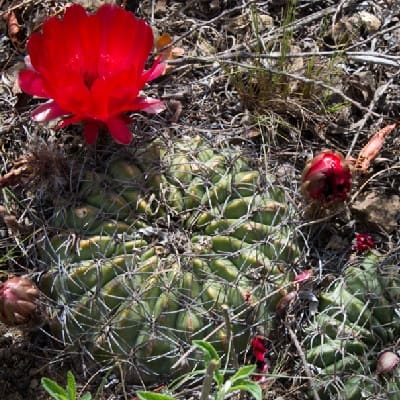
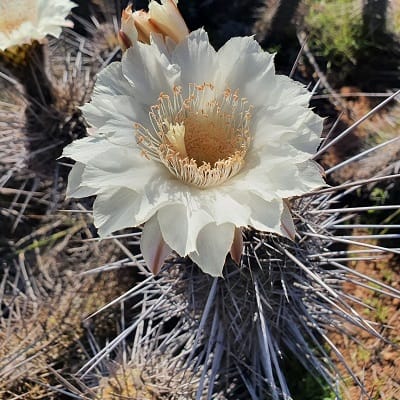

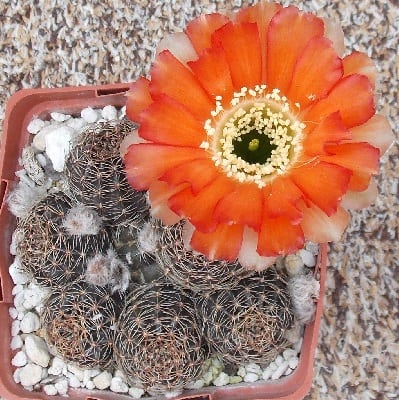
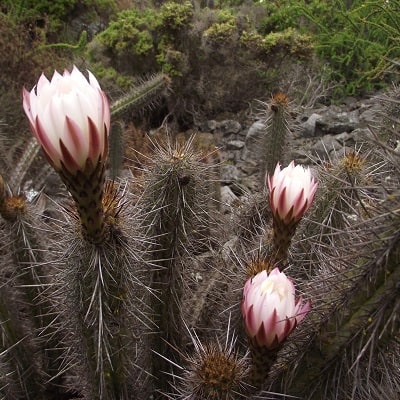
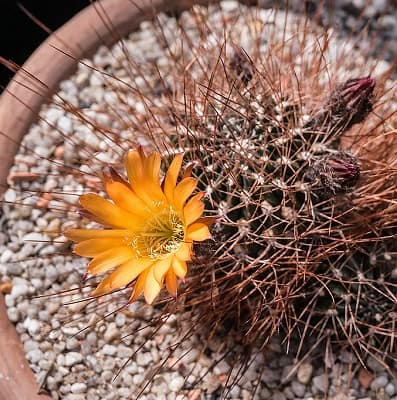
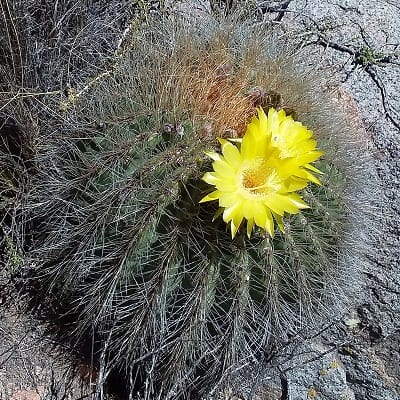
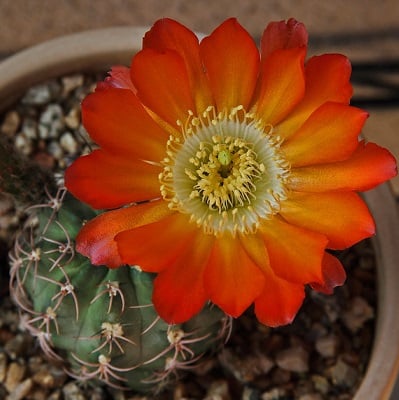
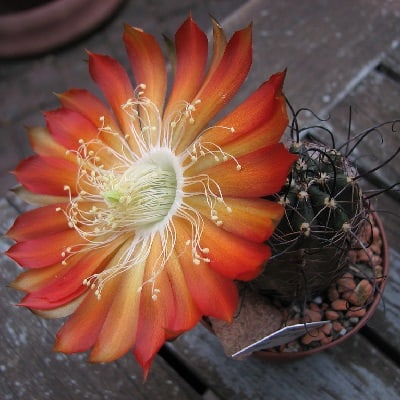
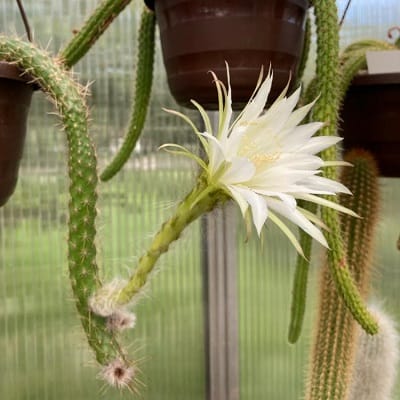
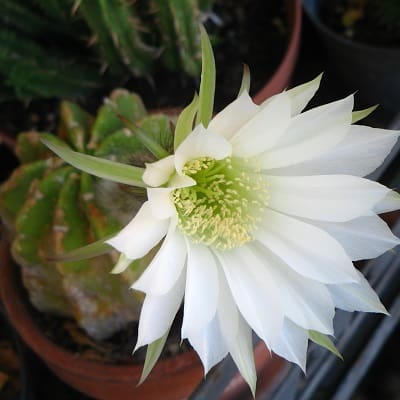
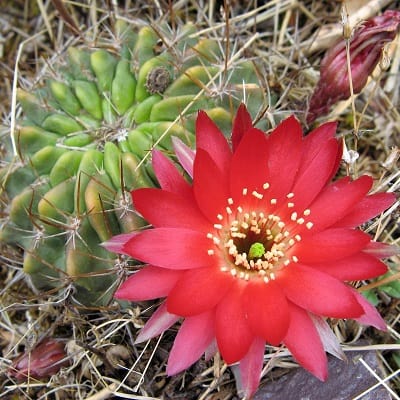
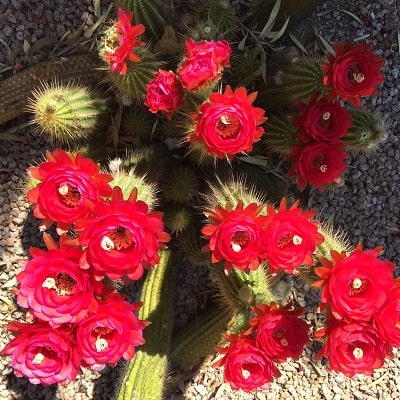
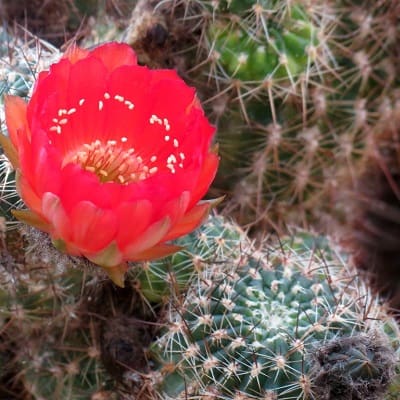
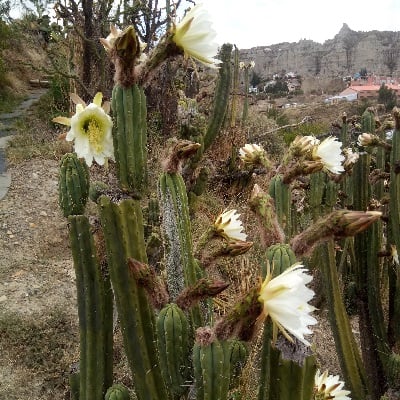
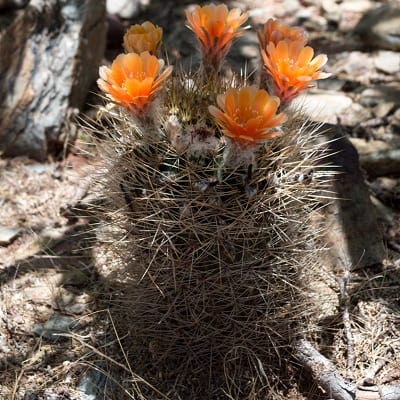
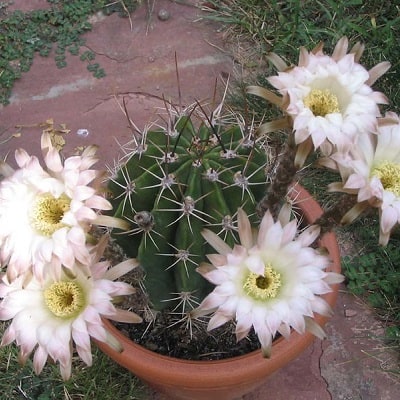
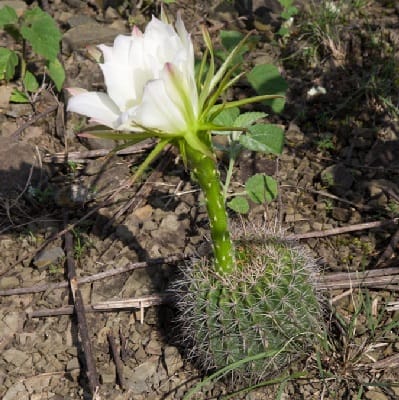
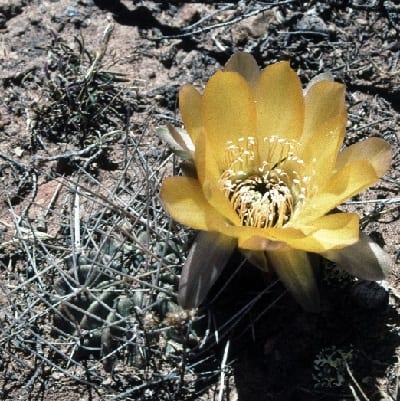
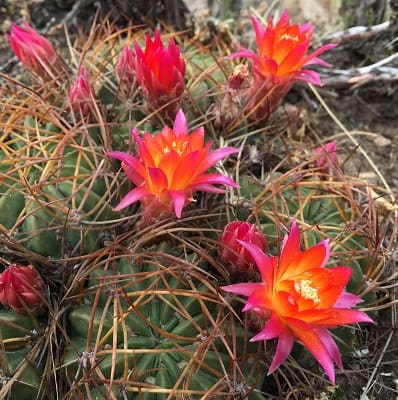
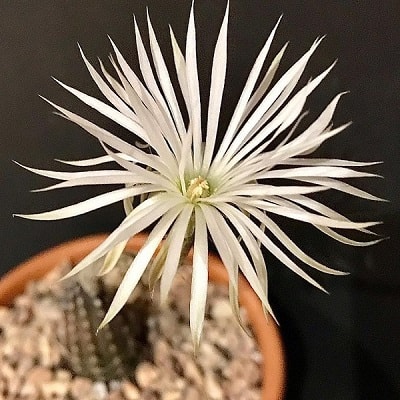
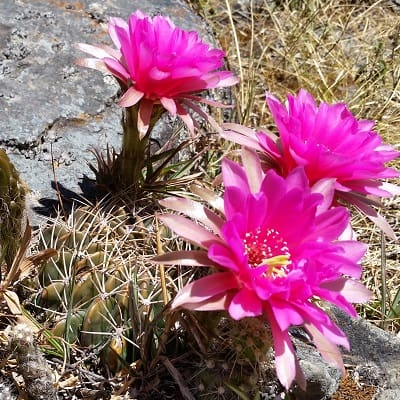
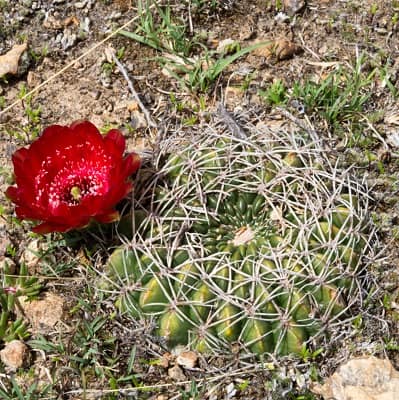
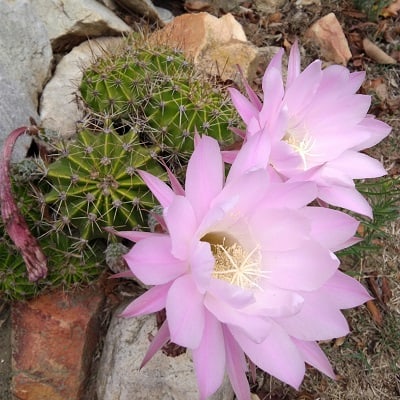
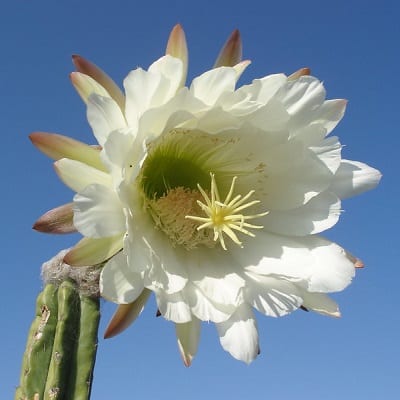
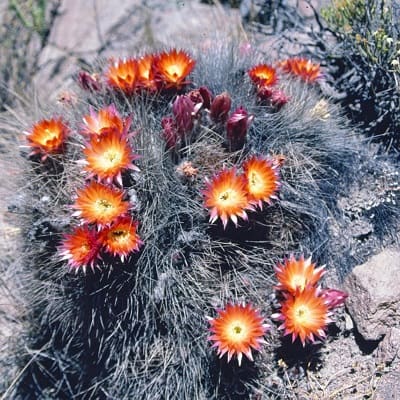
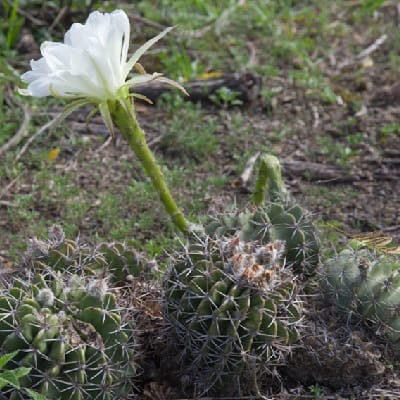
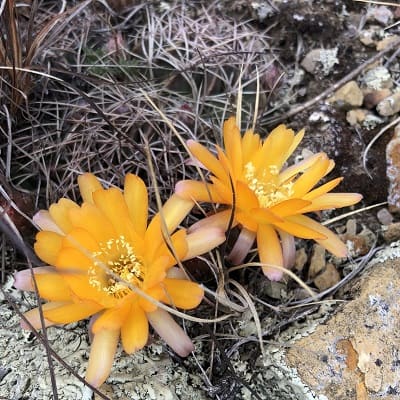
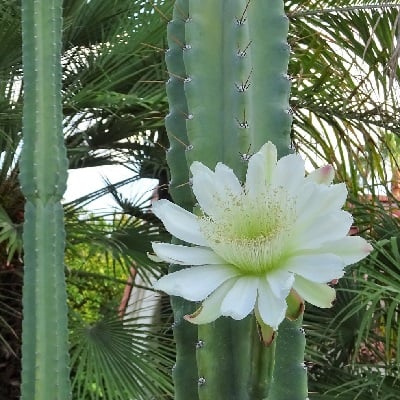
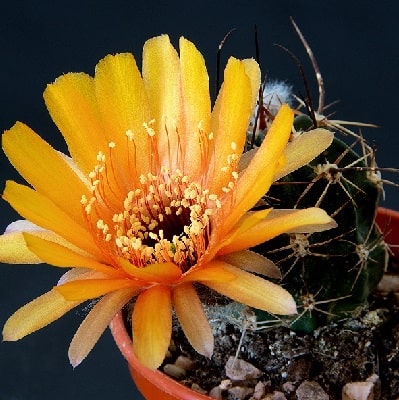
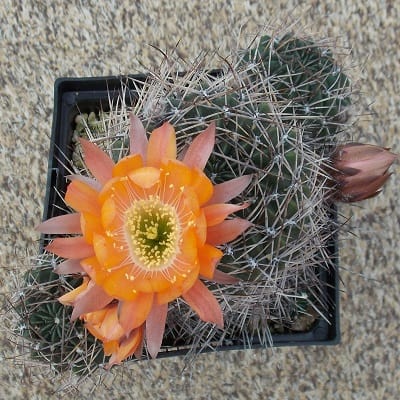
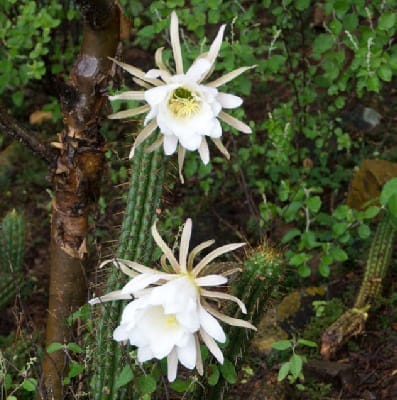
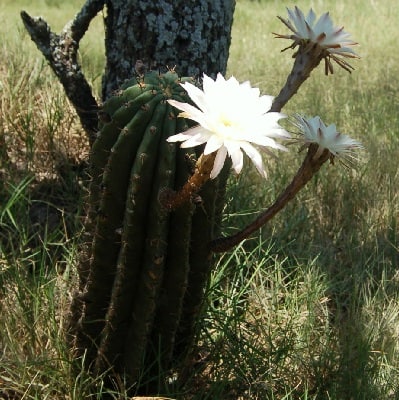
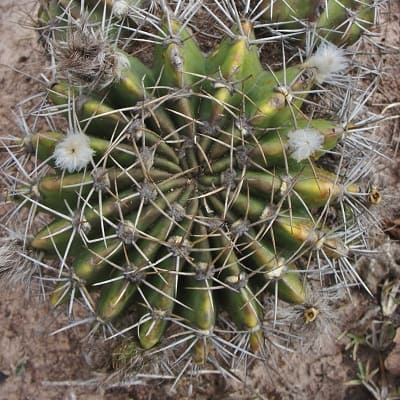
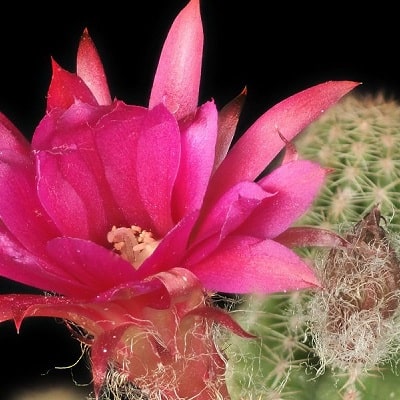
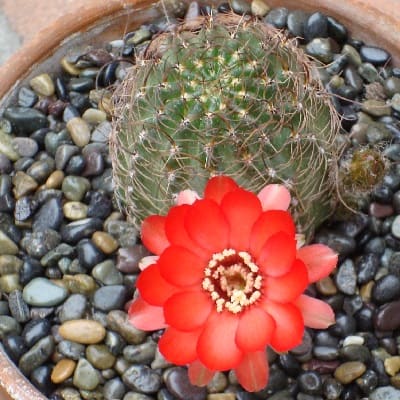
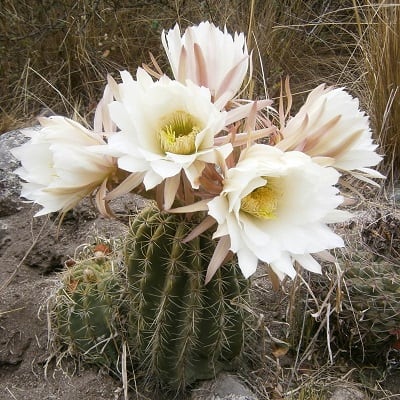
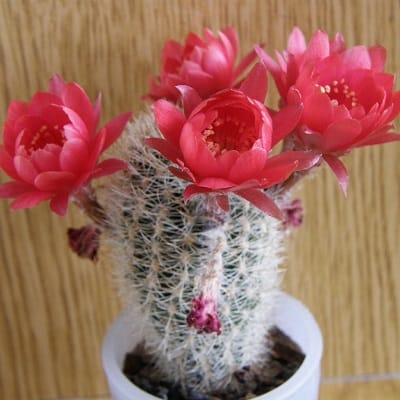
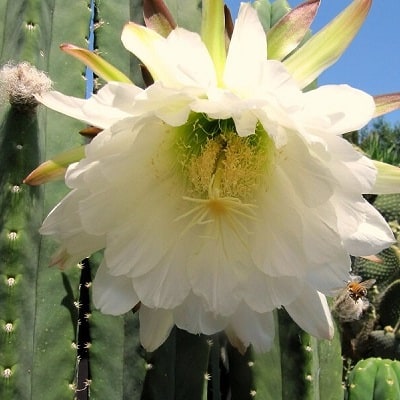
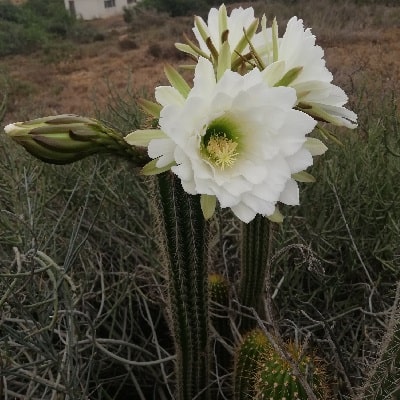
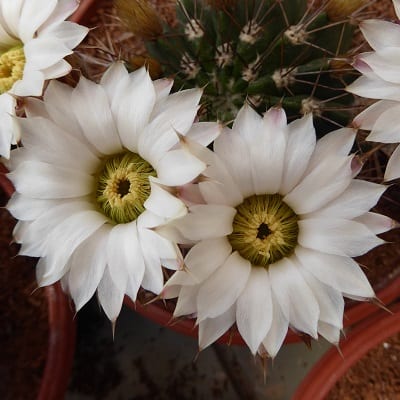
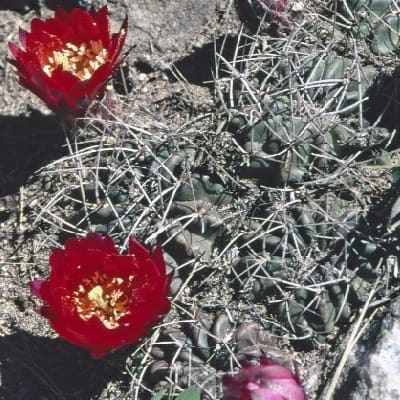
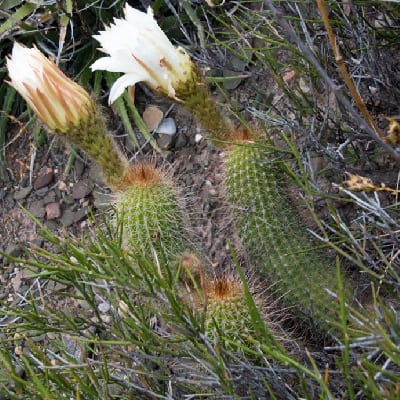
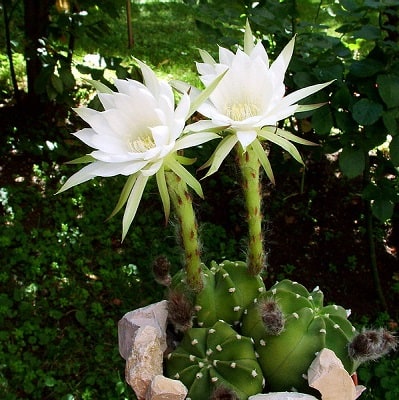
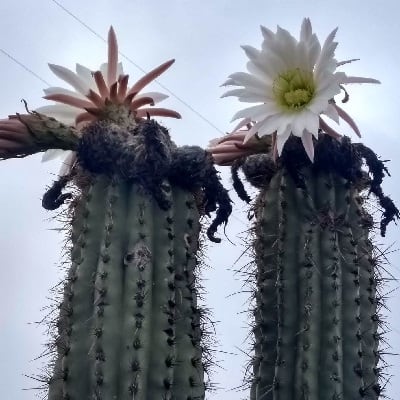
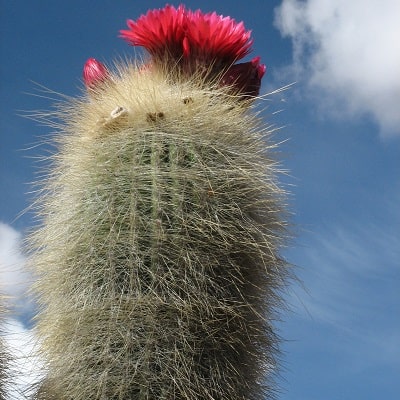
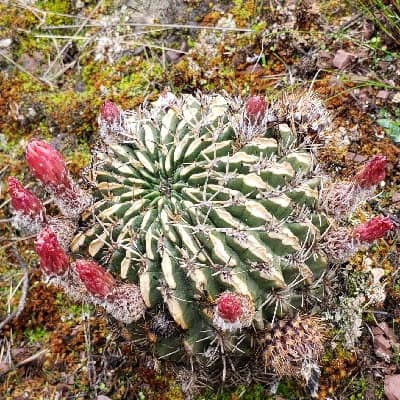
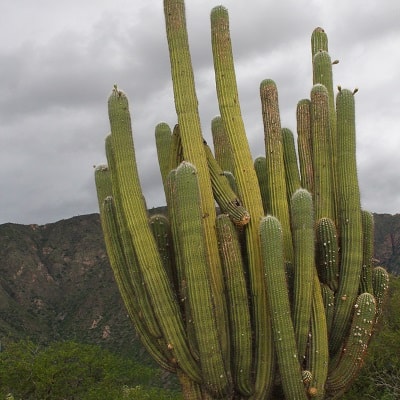
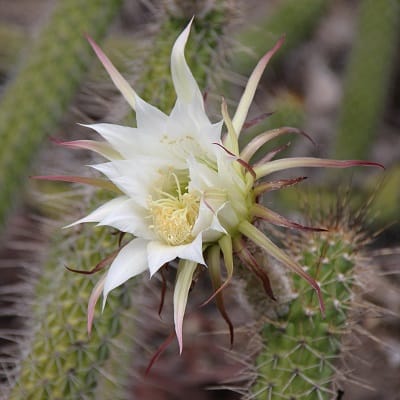
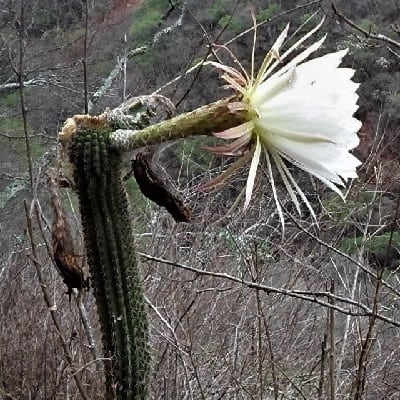
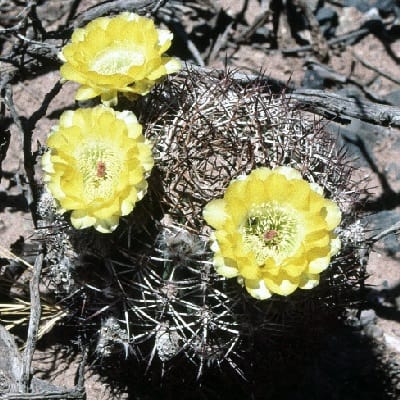
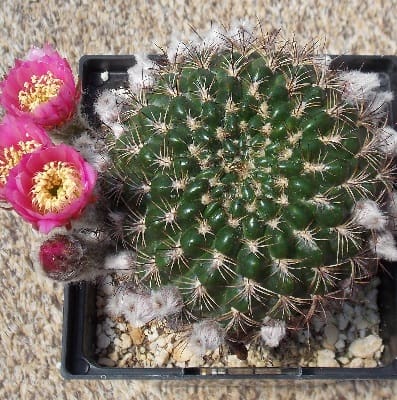

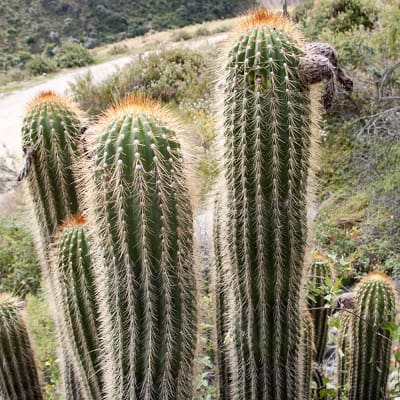
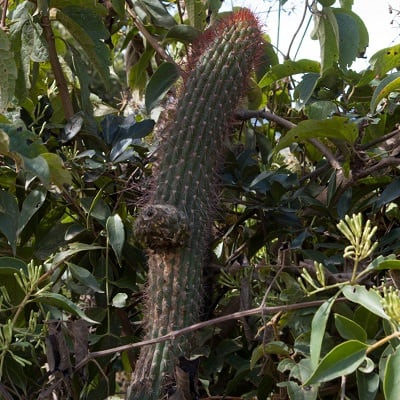
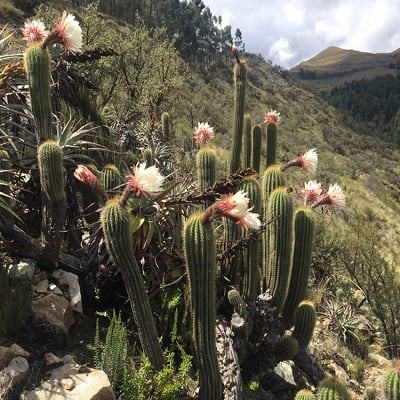
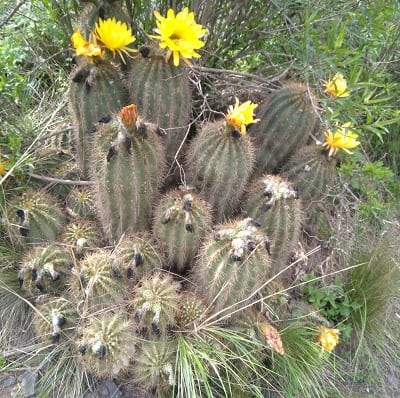
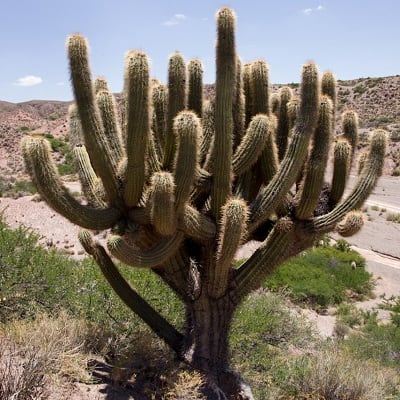
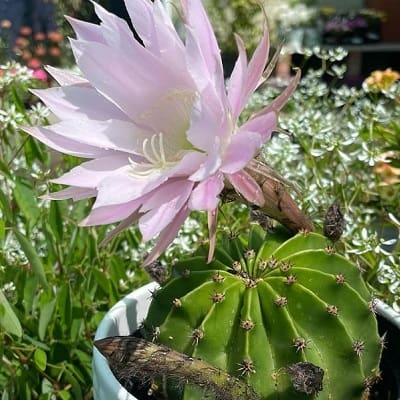
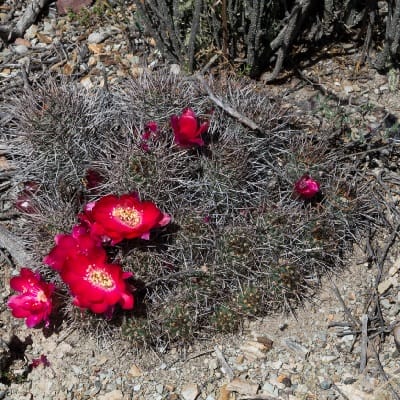
Related Post:
1,000 Types of Cacti With Pictures
Echinopsis Species and Varieties
Echinopsis amblayensis

Echinopsis amblayensis is a cactus known for its vibrant orange-red flowers and green stigmas. It’s easy to grow and highly valued for its stunning blooms.
Echinopsis amblayensis var. albispina

Echinopsis amblayensis var. albispina is a small, clustered cactus with creamy white spines. Its orange-to-red flowers steal the show with their beauty.
Echinopsis ancistrophora

Echinopsis ancistrophora is a striking cactus found in the Andean region. It comes in various sizes and flower colors, ranging from white to dark-red.
Echinopsis arachnacantha

Echinopsis arachnacantha features smaller stems and yellow-orange flowers. Its dark green, flattened spherical stem has weakly notched ribs.
Echinopsis atacamensis

Echinopsis atacamensis is a tall, columnar cactus. The Chilean subspecies is unbranched, while the Argentinean and Bolivian subspecies resemble Saguaro cacti.
Echinopsis aurea

Echinopsis aurea is a cactus species that can grow solitarily or with multiple offshoots. Its flowers vary from lemon yellow to white, pink, or red.
Echinopsis backebergii

Echinopsis backebergii is a small cactus known for its bright-colored, carmine-red or violet flowers with a bluish sheen and white throats.
Echinopsis bruchii

Echinopsis bruchii is a larger cactus species, with thick, multi-ribbed bodies. Its spines are yellow or brownish-orange, while the blossoms are brilliantly red.
Echinopsis caineana

Echinopsis caineana features egg-shaped stems adorned with whitish to grey spines. Its funnelform flowers show colors like pink, deep violet-rose, or magenta.
Echinopsis calorubra

Echinopsis calorubra boasts a single long central spine and show-stopping orange-red to dark red flowers.
Echinopsis candicans

Echinopsis candicans is a cactus that forms clumps and resembles a torch cactus. However, it’s not as tall or straight, and it tends to lean to one side. It grows pups from both the base and the other side, eventually forming a large clump ranging from 1 to 3 meters across. The showy flowers are funnel-shaped, with bright white insides, yellow centers, and pinkish outsides.
Echinopsis chamaecereus

Echinopsis chamaecereus, also known as the peanuts cactus, is a highly popular and crowd-pleasing cactus. It features many closely packed, finger-like stems. Established plants can reach a height of 6 inches and a width of 12 inches or more. They have soft, white bristles, spines that measure around 2 mm in length. Their orange-red flowers, about 2 inches in diameter, often bloom in abundance from an early age.
Echinopsis chiloensis

Echinopsis chiloensis, previously called Trichocereus chiloensis, is a cactus covered in sharp spines. It typically grows into a shrub or small tree with multiple stems. Its branches start near the base and initially extend at right angles to the main trunk but soon grow erect. Some can even reach heights of up to 26 feet. This cactus produces nocturnal flowers measuring 5.5 inches long. The outer part of the flowers is white with hints of red or brown.
Echinopsis chrysochete

Echinopsis chrysochete is a cactus known for its spines and flattened body. It usually grows solitarily and can reach a diameter of about 10 inches. Sometimes it forms small, few-branched clumps. The flowers are funnel-shaped, measuring 1.2 to 1.6 inches in diameter. They come in vibrant shades ranging from orange to red, with shiny surfaces and whitish centers.
Echinopsis cinnabarina

Also known as Lobivia cinnabarina, Echinopsis cinnabarina is a small cactus with a flat body, usually growing alone but sometimes forming small clumps. Its spines are arranged like small spiders, while its apical flowers are scarlet to deep red.
Echinopsis densispina

Echinopsis densispina is a low-growing cactus species with colorful flowers ranging from yellow to orange and red. This species displays a lot of variation across its range, and some experts recognize several varieties. However, it’s challenging to categorize them based on spine morphology and flower color due to the continuous range of variation in these traits.
Echinopsis eyriesii
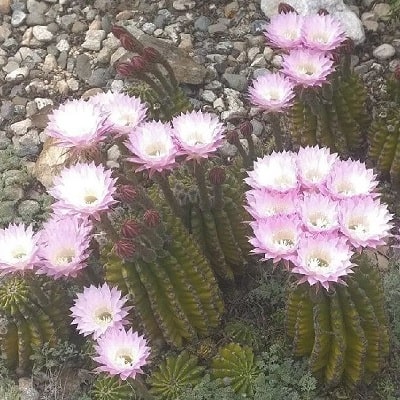
Native to Argentina, Uruguay, and Brazil, Echinopsis eyriesii prefers to grow in low-lying areas and tropical climates. This cactus has a bulbous and thick caudex with ribs and spines. Each stem or mound grows quite tall and wide.
Echinopsis ferox

Echinopsis ferox is a large cactus covered in spines, either solitary or branching. Its body is almost concealed by the spines. This species varies greatly, especially in the shape and length of the spines and the color of its flowers. It has a bluish-green stem that starts off spherical, becoming cylindrical as it grows. It can reach a height of 10 inches and a diameter of 4-16 inches.
Echinopsis Flying Saucer
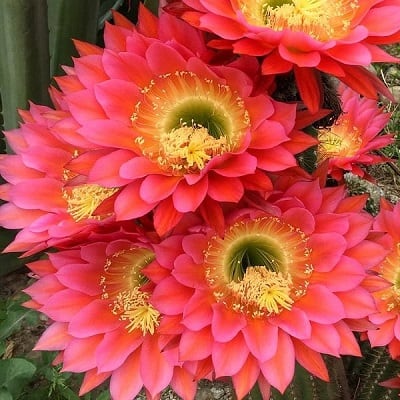
The Echinopsis Flying Saucer is a hybrid cactus variety with short and stout stems. It features up to 14 ribs throughout its structure. This plant can grow quite tall, reaching around 30 inches when fully mature. Native to parts of South America, it has several spines on its ridges.
Echinopsis haematantha

Echinopsis haematantha is an interesting and highly variable cactus species that comes in many forms and varieties. It is often a solitary cactus but may slowly form small clumps. Its flowers can be yellow, purple, with a white or yellowish-cream throat circle.
Echinopsis haematantha var. kuehnrichii

Echinopsis haematantha var. kuehnrichii is a cactus species that exhibits significant natural variability, particularly in flower color. This variety stands out with slightly smaller solitary bodies that rarely cluster together. It has long black hooked spines. The flowers can range in color from red to orange and yellow, usually with a white throat circle.
Echinopsis hertrichiana

Also known as Lobivia hertrichiana, Echinopsis hertrichiana is a small cactus that can grow alone or form clumps. Each spherical body is about 2.5 inches long and up to 4 inches thick, with around 11-20 notched ribs. The densely interlocking yellowish spines almost completely cover the stem. This cactus is popular for its large, brilliant red flowers that bloom in clusters at the top of the stems.
Echinopsis huascha

Echinopsis huascha, previously known as Lobivia huascha or Trichocereus huascha, is a decorative cactus widely found in cultivation and capable of growing in various conditions. Its beautiful large flowers vary in color from brilliant golden yellow to dark red. Measuring about 4 inches in length, the flowers cluster at the top of the plant. The flowers have a shorter tube compared to other species, and they only bloom during the day.
Echinopsis lageniformis

Echinopsis lageniformis, commonly called Trichocereus bridgesii, is a fast-growing columnar cactus that grows as a shrub or small tree. In Bolivia, it is known as Achuma or Wachuma. It can reach heights of 6 to 16 feet and branches moderately. The pale green stem has a slight glaucous appearance. The names Achuma and Wachuma are used for related species like Echinopsis pachanoi, which are also known for their psychedelic effects.
Echinopsis lateritia

Echinopsis lateritia is a beautiful small species with a low, thick, flat to cylindrical stem. Although it typically grows alone, sometimes it branches from the base to form clusters. The size of the plant depends on the clone. The flowers are short, funnel-shaped, 1-2 inches long and 2-2.5 inches in diameter. They can be yellow, orange, pinkish, brick-red, or carmine in color, often with a lighter center.
Echinopsis leucantha

Echinopsis leucantha is commonly found in shrublands and forests, thriving in sandy, silty, and gravel soils. It has a round to elongated stem that is grayish-green to brownish, reaching heights of 6 to 14 inches and a diameter of 4 to 6 inches. The trumpet-shaped flowers are white or pale pink and approximately 6 inches long.
Echinopsis macrogona
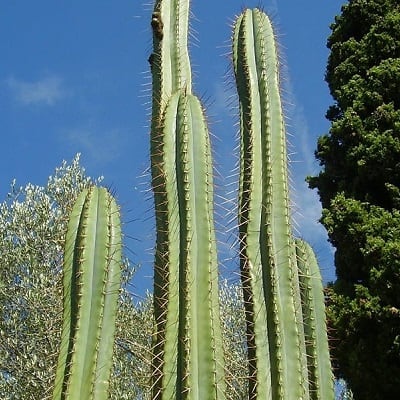
The Echinopsis macrogona cactus is from Bolivia. It grows as a thick stem that can reach up to 10 feet tall. The stem has about 6 ribs, but sometimes more depending on its thickness. The stem is usually gray-green with a hint of blue and has brownish spines. White flowers usually blossom at the tips of the stem.
Echinopsis mamillosa

Echinopsis mamillosa is a round or columnar cactus, about 4 to 10 inches in diameter and 3 to 12 inches tall, depending on the type. It has a fresh green body with short curved spines. The flowers are beautiful white and bloom at night.
Echinopsis marsoneri

Echinopsis marsoneri, also known as Lobivia marsoneri, is a small and variable cactus that grows alone or in groups. The flowers come in various colors, like yellow, orange, vine-red, and violet. They all have a dark purple-violet to black throat, which is thickened at the edge and shiny.
Echinopsis maximiliana

Echinopsis maximiliana is a common cactus species that forms clusters. It has dark green rounded or short cylindrical heads, about 2 inches in diameter, with up to 20 ribs. The spines can be off-white, yellow, or brown. The flowers are beautiful, orange-red with yellow throats, and they last a long time.
Echinopsis mirabilis

The flowers of Echinopsis mirabilis are large and white, but each flower only lasts for a single night. It usually has a single stem that is dark brown, but some types can have multiple stems. Each stem has a few ribs and white or cream-colored spines.
Echinopsis oligotricha

Echinopsis oligotricha has flowers with nearly naked tubes, meaning they have very few hairs. It is a small plant with a flattened stem, but it is worth growing for its fantastic pink-violet to red flowers with a contrasting white throat.
Echinopsis oxygona

Echinopsis oxygona, also called the “Easter Lily Cactus,” is known for its gorgeous pink flowers that bloom at night. The flowers are often as large as the whole plant, making it very popular. The flower has a sweet smell. It varies in appearance.
Echinopsis pachanoi

Echinopsis pachanoi is a large, fast-growing cactus with multiple stems. It forms a small tree that can be 10 to 20 feet tall and spreads about 6 feet wide. The flowers are very large, white, fragrant, and can reach up to 9 inches in diameter. They stay open for the following day and are very showy.
Inner perianth segments are white, and outer segments are brick red. The stamen filaments are green. Flower buds appear on the spine clusters near the top of branches. The buds are pointed. The flower tubes and fruits are covered with scales and black curled hairs.
Echinopsis pentlandii

Echinopsis pentlandii, also known as Lobivia pentlandii, is a common and attractive small cactus that grows in clusters. It flowers and matures at a young age, making it enjoyable to grow. It comes in many varieties with pretty flowers in almost any color you can imagine, like purplish-pink, pale-pink, reddish-brown, orange, red, or yellow. The flowers have a contrasting throat circle.
Echinopsis pugionacantha

Echinopsis pugionacantha is usually a single stem cactus, but sometimes it can have branches at the base. It is hard to find because it often grows hidden below the soil. The flowers can be yellow, pink, orange, or red and are about 1.8 inches long and wide.
Echinopsis pugionacantha subsp. rossii

Echinopsis pugionacantha subspecies rossii is a pretty little cactus with a low and thick stem up to 3 inches in diameter. It has 25 to 30 ribs with small felted areoles along the edges. The flowers are orange or reddish with a lighter center, and they can reach about 24 inches long and 2 inches in diameter.
Echinopsis rhodotricha

Echinopsis rhodotricha is a round or columnar cactus that grows in clumps with 8 to 10 upright stems, about 32 inches tall, and 8 to 13 ribs. It has short radial spines up to 1 inch long. The flowers are slender and white, and at the base, they have dark scales with white, black, and red hairy fluffy hairs.
Echinopsis Rose Quartz

Echinopsis Rose Quartz, also known as the Rose Quartz Cactus or Peanut Cactus, has a few round cylindrical stems with notches and spines across the surface. Each stem varies in size and growth rate. The flowers are pink and red, which is why it is named the way it is. The flowers are usually around 3 inches in size.
Echinopsis saltensis

Echinopsis saltensis, also called Lobivia saltensis, is a very interesting and variable cactus species with different forms and varieties. The flowers are pretty and shiny, about 2 inches long, and bell-shaped with dark orange-red or crimson colors, which can seem almost black when they start to open. The stamen filaments are dark red, and the anthers are cream-white. The stigma lobes are greenish.
Echinopsis schickendantzii

Echinopsis schickendantzii is a beautiful cactus, but it does not have a fragrance. It has large bell-shaped white flowers that are about 8 inches long and cluster on top of the plant. They remain open for up to three days.
Echinopsis schieliana

Echinopsis schieliana (best known as Lobivia schieliana) is a cute, prolific clumper cactus with dark reddish-green stems underneath white or brownish spidery spines. The flowers are mostly brilliant light-red and slender.
Echinopsis scopulicola

Echinopsis scopulicola grows to a height of around 13 feet and is mainly a smooth cylindrical stem with up to 6 or so ribs. There are hardly any areoles, spines, or hair on this stem, and even if there are, they often go unnoticed. The flowers are white in color and usually only open throughout the night.
Echinopsis spachiana

Echinopsis spachiana is a multi-stemmed columnar cactus at first simple, later profusely branching at the base; branches ascending parallel with the main stem. Its flowers are nocturnal, white, about 8 inches long and 6 inches in diameter, lasting about 24 hours from one sunset to the following one.
Echinopsis spiniflora

Echinopsis spiniflora is usually solitary or slowly branching through basal shoots. It can become an upright cactus with stems that can reach a height of about 6 inches. The spines are arranged neatly in rows down the stem. The showy flowers range from white to pinkish lilac and are about 1.5 inches across. It is a pretty variable species.
Echinopsis strigosa

Echinopsis strigosa, formerly Trichocereus strigosus, is a shrubby cactus species that forms clumps to 3 feet in diameter with masses of white trumpet-shaped flowers in the summer.
Echinopsis subdenudata

Echinopsis subdenudata is a globular, almost spineless or with very short cream spines that produce splendid night-blooming, white fragrant flowers up to 9 inches long. It is generally included within (as a synonym of) Echinopsis ancistrophora, suggesting that there is not really a fundamental difference between the two.
The key difference by which this species was separated, namely: its much shorter spines (less than 0.08 inches long) almost concealed among the felt of the areoles appears to fall within the natural variation of Echinopsis ancistrophora, and it should be synonymized with the latter. It is at most a race of Echinopsis ancistrophora, but it still has value for a collector because they identify plants with particular characteristics.
Echinopsis tacaquirensis

Echinopsis tacaquirensis is a shrubby columnar cactus, branching basally with crowded ascending branches up to 8.2 feet high (occasionally up to 16.4 feet tall). Its flowers are white to delicate pink, funnel-shaped and up to 9 inches long.
Echinopsis tarijensis

Echinopsis tarijensis (Trichocereus tarijensis) is a tall columnar cactus, solitary at first, later branching from the sides, and grows up to 16.4 feet high. The spines in young stems are long, uneven, and robust, while the old stems are unarmed. The flowers borne near the stem tips are funnelform, light or dark red, pink, or (rarely) creamy white, up to 4.7 inches long.
Echinopsis tegeleriana

Echinopsis tegeleriana usually grows solitarily but sometimes forms small clumps. It has large taproots. The blooms range from red to orange to yellow and have pink-orange throats.
Echinopsis terscheckii

Echinopsis terscheckii (Trichocereus terscheckii) best known in cultivation as Trichocereus terscheckii is a huge treelike cactus species, called Argentina cardon grande. At first columnar and usually in age with numerous large arms, 32.8 to 39.4 feet high. Its flowers are very large, nocturnal, borne laterally, bell-shaped to funnelform, white, 5.9 to 7.9 inches long, and 4.9 inches broad.
Echinopsis thionantha

Echinopsis thionantha (best known in cultivation as Acanthocalycium thionanthum) is a highly variable taxon with several forms. The specific name “thionantha” was originally applied to the yellow flowering form, but now comprises plants of variable colors of flowers and spines sizes. There are a number of varieties, but not all are universally recognized.
Echinopsis tiegeliana

Echinopsis tiegeliana (Lobivia tiegeliana) is a small cactus, usually solitary, whose spines look pectinate (i.e., its spines are arranged like a comb). This species is very variable in color and number of spines, size, and color of flowers. The flowers are deep red to violet-pink, although there are varieties with yellow flowers as well.
It comprises several questionable varieties, and its taxonomic history has undergone several changes. The great variability of Echinopsis tiegeliana is due to the fact that cross-pollination among different forms and different species (in habitat and especially in collections) is very frequent, and it can be quite difficult to determine what is the “pure type” and the cross.
Echinopsis volliana

Echinopsis volliana is a columnar cactus with bright green-yellow stems. The shoots have a maximum diameter of up to 4 inches and are characterized by approximately 13 ribs. It has radial spines of 7-12 in number, as well as thin spines that can grow up to 0.3 inches long. There is usually only one middle spine, which can reach a length of 1 inch. All spines on this cactus are yellow-colored. Its flowers are white and can grow up to 5 inches long.
Echinopsis werdermanniana

Echinopsis werdermanniana is a large and attractive cactus that can reach heights of 16-26 feet. It has a thick trunk with a diameter of up to 24 inches. This cactus resembles Echinopsis atacamensis in shape but is bigger and has fewer spines. It produces white flowers that are about 8-9 inches long, often emerging from the top of the plant.
Echinopsis werdermannii

Echinopsis werdermannii includes both columnar and rounded stems. These rounded stems can be part of the columns or grow separately. Each stem has ridges with areoles and spines, and it blooms pink and white flowers on stalks.
Echinopsis yuquina

Echinopsis yuquina is native to Bolivia. It produces trumpet-shaped flowers that grow solitary. This perennial plant also produces berries.
How Do You Care for Echinopsis?
Echinopsis plants are unique and can come in a variety of shapes, sizes, and colorful flowers. What’s interesting is that they can even have different colored flowers on the same plant due to hybridization.
Unlike most cacti that only bloom once a year, Echinopsis plants can bloom throughout the year if the temperature stays above 70 degrees Fahrenheit. However, it’s important to provide proper care to ensure their well-being. Here’s how you can take care of your Echinopsis plant:
Light
Just like many other plants, Echinopsis thrives in sunlight, especially during the summer months. However, too much direct sunlight can cause sunburn and discoloration on the plant’s edges. If you notice any signs of sunburn, move the plant to a shady area to protect it.
Watering
The watering needs of your Echinopsis plant depend on the season. During summer when they are blooming, they require more water. However, as the temperature starts to drop in fall and winter, the plant becomes dormant, so water it conservatively.
The frequency of watering also depends on factors like soil type, pot design, and size. To check if your plant needs water, insert a pencil into the soil. If it comes out dry or with very little moisture, it’s time to water your plant. When watering, make sure to completely saturate the soil in the pot.
Soil
Echinopsis plants prefer well-draining soil to avoid water retention that can harm their roots. Adding pebbles to the soil can improve drainage, and using sand for the top layer of the pot helps it drain faster. Since Echinopsis has shallow roots, the size of the pot doesn’t matter.
If you decide to plant your Echinopsis in the ground instead of a pot, be cautious with watering. Freezing temperatures can cause the water in the cactus to freeze, potentially damaging the plant. If your plant is in a pot, you can move it indoors to protect it, but this isn’t possible if it’s planted in the ground.
Fertilizing
During the growing season of your Echinopsis plant, you can fertilize it two to three times. Use a liquid fertilizer with a balanced ratio of nitrogen, phosphorus, and potassium, which is suitable for cacti. However, avoid fertilizing during the plant’s dormant period.
Pests and Diseases
Fortunately, Echinopsis plants are not prone to many pests or diseases. However, root or stem rot can occur due to excessive water retention. To prevent this, ensure that the pot has proper drainage and avoid overwatering your plant.
How to Propagate Echinopsis

Propagating Echinopsis plants can be relatively easy or challenging, depending on the specific species. Following a few tips and propagating during the growing season can help you achieve good results.
Look for offsets clustered at the base of your Echinopsis plant. Let them grow to at least an inch in length before cutting. Always cut at the narrowest part of the offset.
Place the offsets on a paper towel to dry out until the wounds have calloused. Then, plant them in a soil mix similar to the one used for the mother plant, preferably one that drains well.
With proper care, the offsets should take root within a few weeks. Once they’ve established roots, repot the new plants. Congratulations! You’ve successfully propagated new Echinopsis saplings from your plant.
FAQs
What Is the Difference between Trichocereus and Echinopsis?
Back in 1909, Trichocereus was recognized as a distinct cactus genus. These plants are known for their tall stature and well-defined branches. On the other hand, Echinopsis cacti are shorter and have a circular shape.
But later, scientists debated whether there were any real scientific differences between the two. The flowers and seeds looked the same, making it difficult to tell them apart. After much discussion, they were finally grouped together under the same genus. The name Trichocereus was abandoned, and both plants were classified under the genus Echinopsis, which was established in 1837.
However, some botanists disagree with this classification and believe that Trichocereus should remain a separate genus. So, there’s still ongoing debate among experts about this.
How Long Do Echinopsis Flowers Last?
One of the most astonishing features of Echinopsis cacti is their stunning and fragrant flowers. These flowers can be quite big, reaching a size of 4 to 6 inches, which gives them a quirky appearance.
Unlike most cacti that bloom just once a year, Echinopsis cacti can flower multiple times within a year. As long as the temperature doesn’t drop below 70 degrees Fahrenheit, these plants can produce beautiful flowers throughout the year. So, if you live in a warm area, you can enjoy the sight of Echinopsis flowers adorning your cactus all year round.
